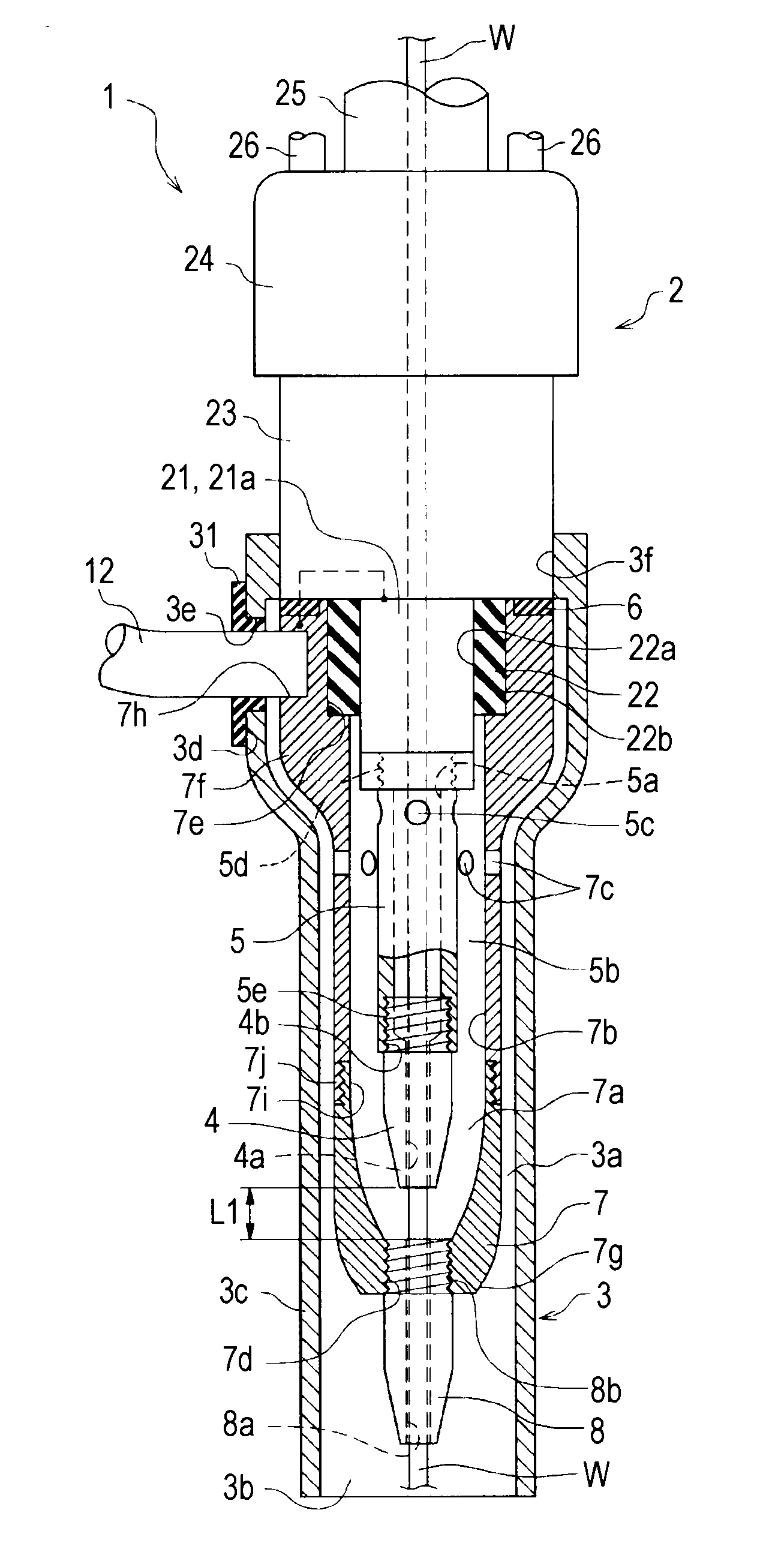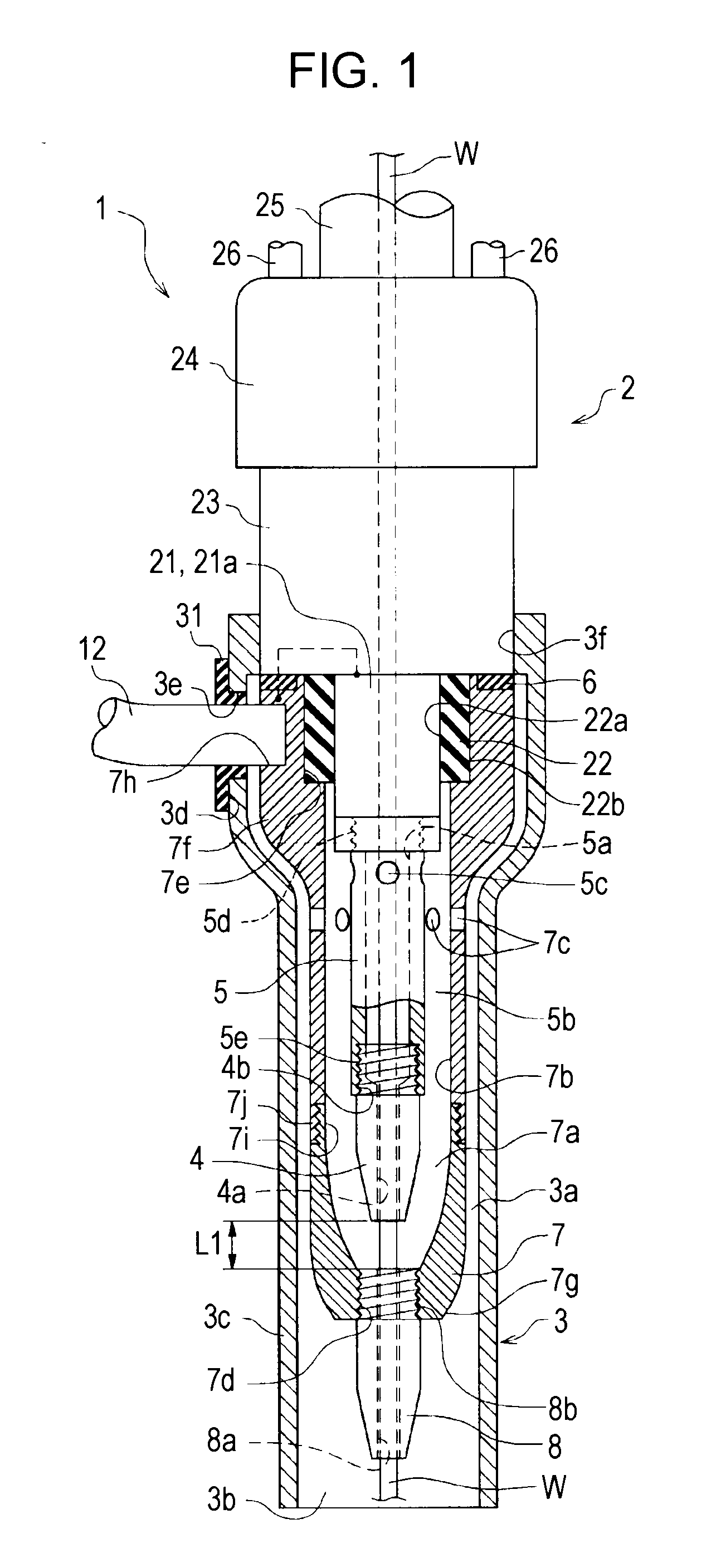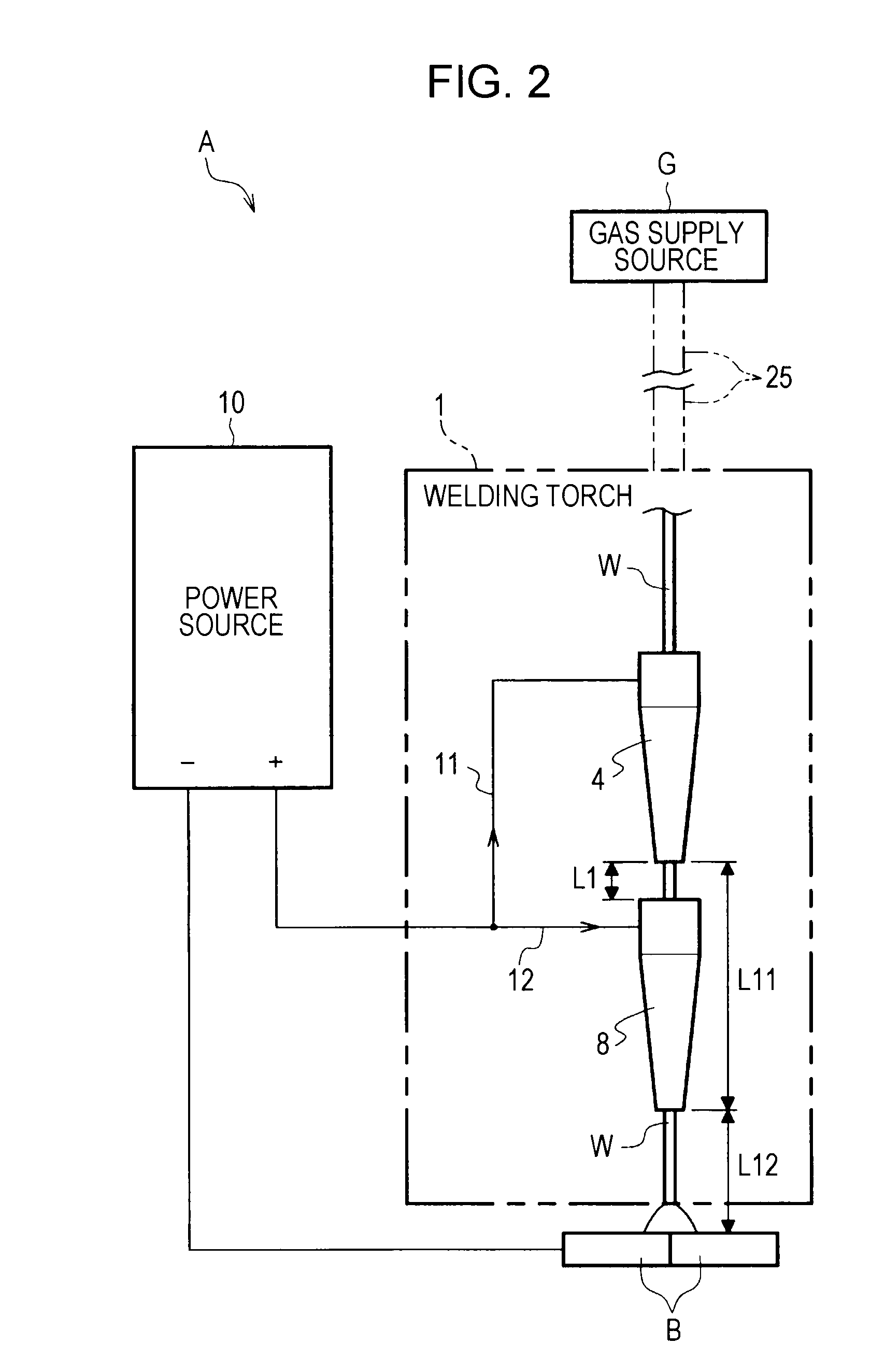Welding torch
a welding torch and tip technology, applied in the field of welding torch, can solve the problems of increasing the frequency of tip replacement, increasing and needing to replace the tip, so as to improve the welding and tip replacement efficiency. , the effect of reducing the size of the entire welding torch
- Summary
- Abstract
- Description
- Claims
- Application Information
AI Technical Summary
Benefits of technology
Problems solved by technology
Method used
Image
Examples
first modification
[0072]Although the embodiment of the present invention has been described above, the present invention is not limited to the above-described embodiment, and it may be appropriately modified within a scope not departing from the spirit of the present invention. Note that the configurations already explained will be denoted by the same reference numerals, and the description for such configurations will be omitted. FIG. 7 is a block diagram showing a first modification of the welding torch according to the embodiment of the present invention.
[0073]In the embodiment described above, a configuration in which one power source 10 is used has been described, as shown in FIG. 2. However, the present invention is not limited to such a configuration. For example, as shown in FIG. 7, a power source 10A may include a plurality of power sources, namely, a first power source 10A1 and a second power source 10A2. The first tip 4 and the second tip 8 may be supplied with current from different power...
second modification
[0074]Furthermore, the power source 10A including the first power source 10A1 and the second power source 10A2, shown in FIG. 7, may be configured such that the first power source 10A1 is a pulse power source that supplies pulsed electric current to the welding wire W, and the pulsed electric current outputted from the first power source 10A1 may be synchronized with the timing of pulsed electric current outputted from the second power source 10A2.
third modification
[0075]FIG. 8 is an electrical block diagram showing a third modification of the welding torch according to the embodiment of the present invention. As shown in FIG. 8, the first tip 4 and the second tip 8 may be connected to the power source 10 via variable resistors 14 and 14. With this configuration, electric current supplied from the power source 10 to the first tip 4 and the second tip 8 can be appropriately adjusted by the variable resistors 14 and 14.
PUM
| Property | Measurement | Unit |
|---|---|---|
| current | aaaaa | aaaaa |
| distance | aaaaa | aaaaa |
| diameter | aaaaa | aaaaa |
Abstract
Description
Claims
Application Information
 Login to View More
Login to View More - R&D
- Intellectual Property
- Life Sciences
- Materials
- Tech Scout
- Unparalleled Data Quality
- Higher Quality Content
- 60% Fewer Hallucinations
Browse by: Latest US Patents, China's latest patents, Technical Efficacy Thesaurus, Application Domain, Technology Topic, Popular Technical Reports.
© 2025 PatSnap. All rights reserved.Legal|Privacy policy|Modern Slavery Act Transparency Statement|Sitemap|About US| Contact US: help@patsnap.com



